
IELTS General Training
A hub for IELTS GT test takers to help them reach their goal.

Test 6: Reading Passage # 2 – Tips for business presentation & Job in journalism
GT Reading Mock Test 6: Section 1 | Section 2 | Section 3 |
IELTS Reading Test 6: Passage # 2
You should spend about 20 minutes on Questions 1 5-27 , which are based on Reading Passages below.
Write answers to questions in boxes 15-27 on your answer sheet.
Read the text below and answer Questions 15-22 .
Tips for giving an effective business presentation
Preparation Get someone else to evaluate your performance and highlight your best skills. For example, go through your presentation in front of a colleague or relative. Think about who your audience is and what you want them to get out of the presentation. Think about content and style.
Go into the presentation room and try out any moves you may have to make, e.g. getting up from your chair and moving to the podium. Errors in the first 20 seconds can be very disorientating.
Familiarise yourself with the electronic equipment before the presentation and also have a backup plan in mind, should there be an unexpected problem like a power cut.
Dealing with presentation nervousness A certain amount of nervousness is vital for a good presentation. The added adrenaline will keep your faculties sharp and give your presentation skills extra force. This can, however, result in tension in the upper chest. Concentrate on your breathing. Slow it right down and this will relax you. Strangely, having something to pick up and put down tends to help you do this.
It may seem an odd idea, but we seem to fee! calmer when we engage in what’s referred to as a displacement activity, like clicking a pen or fiddling with jewellery. A limited amount of this will not be too obvious and can make you feel more secure at the start.
Interacting with your audience Think of your presentation as a conversation with your audience. They may not actually say anything, but make them feel consulted, questioned, challenged, then they will stay awake and attentive.
Engage with your present audience, not the one you have prepared for. Keep looking for reactions to your ideas and respond to them. If your audience doesn’t appear to be following you, find another way to get your ideas across. If you don’t interact, you might as well send a video recording of your presentation instead!
Structuring effective presentations Effective presentations are full of examples. These help your listeners to see more clearly what you mean. It’s quicker and more colourful. Stick to the point using three or four main ideas. For any subsidiary information that you cannot present in 20 minutes, try another medium, such as handouts.
End as if your presentation has gone well. Do this even if you feel you’ve presented badly. And anyway a good finish will get you some applause – and you deserve it!
Questions 15-22 Complete the sentences below. Choose NO MORE THAN TWO WORDS from the text for each answer. Write your answers in boxes 15-22 on your answer sheet.
15. Practising your presentation on a ………………….. or a family member is helpful. 16. Be prepared for a problem such as a ………………….. . 17. One way to overcome pre-presentation nerves is to make your ………………….. less rapid. 18. It is acceptable to do something called a ………………….. at the start of the presentation to reassure you. 19. Your presentation should be like a ………………….. with the people who have come to hear you. 20. Check constantly for ………………….. to the points you are making. 21. Make sure you use plenty of ………………….. to communicate your message effectively. 22. To keep the presentation short, use things like ………………….. to provide extra details.
Read the text below and answer Questions 23-27.
How to get a job in journalism
You can get a good qualification in journalism, but what employers actually want is practical, rather than theoretical, knowledge. There’s no substitute for creating real stories that have to be handed in by strict deadlines. So write for your school magazine, then maybe try your hand at editing. Once you’ve done that for a while, start requesting internships in newspapers in the area. These are generally short-term and unpaid, but they’re definitely worthwhile, since, instead of providing you with money, they’ll teach you the skills that every twenty-first-century journalist has to have, like laying out articles, creating web pages, taking good digital pictures and so on.
Most reporters keep a copy of every story they’ve had published, from secondary school onwards. They’re called cuttings, and you need them to get a job — indeed a few impressive ones can be the deciding factor in whether you’re appointed or not. So start creating a portfolio now that will show off your developing talent.
It seems obvious – research is an important part of an effective job hunt. But it’s surprising how many would-be journalists do little or none. If you’re thorough, it can help you decide whether the job you’re thinking about applying for is right for you. And nothing impresses an editor more than an applicant who knows a lot about the paper.
There are two more elements to an application – your covering letter and curriculum vitae. However, your CV is the thing that will attract an editor’s attention first, so get it right. The key words are brevity, (no more than one page) accuracy (absolutely no spelling or typing errors) and clarity (it should be easy to follow).
In journalism, good writing skills are essential, so it’s critical that the style of your letter is appropriate. And, make sure it conveys your love of journalism and your eagerness to do the work.
Questions 23-27 Complete the flow-chart below. Choose ONE WORD ONLY from the text for each answer. Write your answers in boxes 23-27 on your answer sheet.
Getting a job in journalism
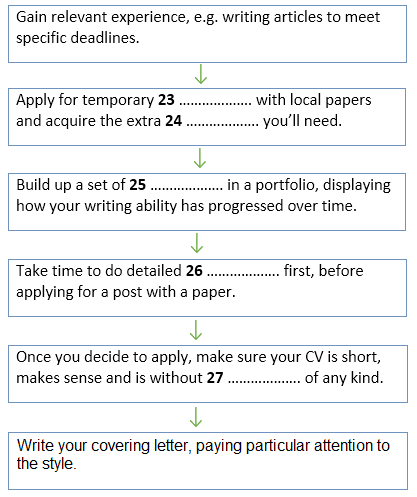
Tips for giving an effective business presentation & How to get a job in journalism: Reading Answers
15. colleague 16. power cut 17. breathing 18. displacement activity 19. conversation 20. reactions 21. examples 22. handouts 23. internships 24. skills 25. cuttings 26. research 27. errors
Leave a Reply Cancel reply
Your email address will not be published. Required fields are marked *
Privacy Overview
- SUGGESTED TOPICS
- The Magazine
- Newsletters
- Managing Yourself
- Managing Teams
- Work-life Balance
- The Big Idea
- Data & Visuals
- Reading Lists
- Case Selections
- HBR Learning
- Topic Feeds
- Account Settings
- Email Preferences
What It Takes to Give a Great Presentation
- Carmine Gallo

Five tips to set yourself apart.
Never underestimate the power of great communication. It can help you land the job of your dreams, attract investors to back your idea, or elevate your stature within your organization. But while there are plenty of good speakers in the world, you can set yourself apart out by being the person who can deliver something great over and over. Here are a few tips for business professionals who want to move from being good speakers to great ones: be concise (the fewer words, the better); never use bullet points (photos and images paired together are more memorable); don’t underestimate the power of your voice (raise and lower it for emphasis); give your audience something extra (unexpected moments will grab their attention); rehearse (the best speakers are the best because they practice — a lot).
I was sitting across the table from a Silicon Valley CEO who had pioneered a technology that touches many of our lives — the flash memory that stores data on smartphones, digital cameras, and computers. He was a frequent guest on CNBC and had been delivering business presentations for at least 20 years before we met. And yet, the CEO wanted to sharpen his public speaking skills.
- Carmine Gallo is a Harvard University instructor, keynote speaker, and author of 10 books translated into 40 languages. Gallo is the author of The Bezos Blueprint: Communication Secrets of the World’s Greatest Salesman (St. Martin’s Press).
Partner Center
- Frequently Asked Questions (FAQs)
- Terms and Conditions
- British Council Global
- Accessibility
© 2024 British Council
- Mini English Lessons
- Business English
How to Ace Your Business Presentation in English

So, you need to make a business presentation in English.
First of all, congratulations! To be in your position, you must have invested a huge amount of time and effort in your English language skills. You should be proud.
That said, we totally understand that giving a presentation in a second language can be a challenge. You may be worried that your audience won’t understand your accent. Perhaps you are wondering whether you need to use specific vocabulary. Maybe you’re not sure how best to handle questions from your audience.
If this sounds like you, don’t worry. In this post, we’re going to run through our top tips for acing your business presentation in English. Even if you’ve already made a few presentations in the language, we’re sure you’ll find these suggestions helpful.
So, read on to learn more. And before we start, let us wish you the very best of luck in delivering your next presentation.
Understand your audience
As with all forms of communication, it’s vital that you understand who your audience is. Even in the business world, you can find yourself speaking to very different groups of people.
For example, if you are giving a presentation to members of another company, you would certainly be more formal than when you give a presentation to members of your own team. In each case, you need to think about what your audience will expect from your presentation.
So, before you write a word, ask yourself these questions about your audience. Who are they? What interests them? What do they need to know? What do you want them to do as a result of your presentation?
One useful tip for writing your presentation is to imagine your audience is a single person. It’s easier to write convincingly if you have a single person in mind. Try it!
Mind your language
Most audiences will expect you to give your presentation using formal Business English . Don’t make the mistake of confusing Business English with business jargon .
Successful Business English uses language that is simple, direct, professional and easy to understand. Business jargon on the other hand, relies on obscure phrases, clichés, and acronyms. In many cases, business jargon is complex, not very precise and a barrier to good communication .
We have some useful resources on Business English on this page . However, if in doubt, keep the language of your presentation as simple and clear as possible. It’s also a good idea to use sentences with the active, rather than the passive voice. This allows you to use fewer words, which makes your sentences shorter and more engaging.
To give an example, this is a sentence in the passive voice:
The interview was failed by over one third of applicants.
Now compare this sentence, which is in the active voice.
Over one-third of applicants failed the interview.
To learn more about the active and the passive voice, check out this explainer from the British Council.
Practise, practise, practise
If English isn’t your first language, it’s more important than ever to practise your presentation before delivering it. By practising, you’ll feel more comfortable using English in a business setting. You’ll be able to work on any words or phrases you find difficult to pronounce, or you can change them to words or phrases you are more comfortable with.
Ideally, you should practise giving your presentation in front of someone else. That way you can get useful feedback on what works well, and what doesn’t. If that’s not possible, make a video of yourself giving your presentation. When you see yourself on screen, it will give you helpful insights into ways you can improve your delivery.
Don’t forget to introduce yourself
It may sound obvious, but don’t forget to introduce yourself at the very beginning of your presentation. It not only breaks the ice , but it’s an opportunity to get the audience on your side. If you are presenting to native English speakers, you may wish to tell them that English is not your first language – but don’t apologise for it! If anything, your audience will be impressed that you can give a presentation in a second language.
Have a clear structure
When people learn to teach in the UK, they are often told to structure their lessons in this simple way:
- Say what you’re going to say
- Say what you’ve said
In other words, introduce the session by explaining what you intend to talk about. This sets the audience’s expectations – they know what’s going to happen.
You then use main part of the session to make your presentation. There are many effective ways of doing this, and we’ll cover some of these soon.
Finally, finish by summarising the most important points of your presentation. This helps your audience to remember them clearly.
One other tip, if you plan to let the audience ask questions, it’s a good idea to tell them you’d prefer to answer them at the end of the presentation. This will discourage them from interrupting your presentation at the wrong moment.
Use storytelling
People love stories. If you can capture your audience’s imagination with a story, you can make a very powerful impression.
For example, imagine you are giving a presentation about how to commission new advertisements for your company. You want to make the point that good copywriting as just as important as good visual design.
You can either make your point directly, like this:
“Successful adverts rely on good writing as well as good design. If you change the wording of an advert, it can often result in extra sales – or fewer. Therefore, the words we choose are as important as the images we use.”.
Or you could begin with a story, like this:
“I want you to imagine it’s the year 1907. A man called Louis Victor Eytinge is in prison, convicted of murder. He’s a drug addict, suffering from tuberculosis. He’s unlikely to live, never mind get out of jail. Yet, by 1923 he walked free into a well-paid advertising job and a career as a Hollywood screenwriter. How? He had written his way to freedom. I want to use his story to show you why, if we want successful adverts, we need to commission powerful writing as well as good design.”
Which version of the presentation would you rather listen to?!
Remember pace and pitch
One useful tip for acing your business presentations in English is to vary the pace and pitch of your delivery.
While you don’t want to speak too fast, it’s a good idea to use a different pace for different parts of your presentation. For example, when you want to communicate a key point, speaking more slowly will help people understand that you think it is important.
Equally, it’s a good idea to vary the pitch of your voice. Try and keep this as natural as possible, but experiment with using a higher pitch when asking questions and a lower pitch when beginning your sentences. One good way to learn how to vary your pitch is to listen to UK news broadcasts – news presenters are expert at varying the tone of their voice to keep listeners interested.
Add a call to action
Most business presentations are given for a specific purpose. You may want to convince another company to work with you. Or you may want to convince your own firm to invest in a new kind of product. You may simply be explaining to colleagues how a new training scheme will work.
Whatever the purpose of your presentation, always remember to tell your audience what you want them to do. This is a ‘call to action’. Do you want your audience to email you their ideas? Or send you a funding proposal? Or arrange a meeting?
No matter what you need your audience to do, don’t forget to tell them. And at the very end, be sure to thank them for their time!
More business presentation tips
There are many other tips we could share with you on how to ace a business presentation in English. For example, it’s never a good idea to read your presentation from a piece of paper – it’s not engaging and it means you can’t easily make eye contact. It’s also tempting to rely too heavily on visual aids like PowerPoint, but if you get it wrong your audience will read your slides instead of listening to you. On the other hand, it can really engage an audience if you ask them to work together in small groups to share ideas or solve problems.
However you choose to make your presentation, if you prepare well, speak clearly and work hard to connect with your audience, you are very likely to succeed. And if you’d like to improve your presentation skills even further, why not try live online classes with English Online ? They can help you succeed in any career where using English is essential.
Leave a comment Cancel reply
Your email address will not be published. Required fields are marked *
Related Posts

- Social English
From Conflict to Collaboration: How to Manage Difficult Conversations at Work
Addressing challenging discussions at work is rarely enjoyable, but it’s something we all encounter sooner or later. These conversations have a big impact on […]

Conquer Communication: Overcoming passive-aggressive behaviour at work
Have you ever been in a meeting where a sarcastic “Sure…” throws the whole atmosphere off balance? Welcome to the world of passive-aggressive behaviour […]

Effective Communication 101: How to Not Sound Passive-Aggressive in Your Writing
Learning English can be challenging enough, but encountering a passive-aggressive tone can add an extra layer of difficulty for learners. If you have ever […]
Get Exclusive access to offers and promotions
Enter your email address below to join the english online mailing list..
Personal details will be held by the British Council and will only be used in relation to your request. Please read our terms of use for more information.

- Get started with computers
- Learn Microsoft Office
- Apply for a job
- Improve my work skills
- Design nice-looking docs
- Getting Started
- Smartphones & Tablets
- Typing Tutorial
- Online Learning
- Basic Internet Skills
- Online Safety
- Social Media
- Zoom Basics
- Google Docs
- Google Sheets
- Career Planning
- Resume Writing
- Cover Letters
- Job Search and Networking
- Business Communication
- Entrepreneurship 101
- Careers without College
- Job Hunt for Today
- 3D Printing
- Freelancing 101
- Personal Finance
- Sharing Economy
- Decision-Making
- Graphic Design
- Photography
- Image Editing
- Learning WordPress
- Language Learning
- Critical Thinking
- For Educators
- Translations
- Staff Picks
- English expand_more expand_less
Job Success - Building an Effective Business Presentation
Job success -, building an effective business presentation, job success building an effective business presentation.

Job Success: Building an Effective Business Presentation
Lesson 7: building an effective business presentation.
/en/jobsuccess/common-workplace-communication/content/
Building an effective business presentation

By the end of this lesson, you should be able to...
- Explore reasons for giving a business presentation
- Prepare a business presentation
- Recognize tips for delivering an effective business presentation
If you work in a business or corporate setting, you may be called upon to speak publicly for a variety of reasons. Possible reasons include...
- Being asked to give a report or presentation during a meeting
- Being asked to share your knowledge or expertise on a given topic
- Being asked to teach a new skill (a systems administrator might be asked to teach coworkers how to use a new email client)
- Being asked to give an informative presentation in order to draw newcomers to an activity, group, or program with which you are involved
Determining your purpose
When giving a business presentation, chances are you already know your topic. To prepare, you just have to determine your purpose of presenting that topic to others. In doing so, you'll focus on what exactly you want to say.
To determine your purpose, consider the following:
- Audience . To whom are you presenting? What are the audience's special interests and concerns? Which part is most interesting or significant to the audience? How will they react to your topic? Are there any special or technical terms that should be defined?
- Order of importance . What aspects of your topic are most important or most serious? Choose three or four main points.
- Time . What can be most easily explained or discussed in the time or space allotted?
- Purpose . What do you want the audience to know, understand, believe, or do when you are finished? The answer to this question should be clearly written and should focus on your three to four main points. The sentence below will serve as your purpose statement.
Sample purpose statement : "By the end of my presentation on _________________, I want my audience to know/understand/believe/do _____________________, ______________________, and _____________________."
Researching and organizing your presentation
The next step is to thoroughly research each point so you can find evidence to support your statement. Remember, providing supportive evidence lends to the overall credibility of your presentation.
To begin your research, check out:
- Credible online resources
- Encyclopedias
- Expert interviews
Look for facts , figures , statistics , and definitions . Consider using expert testimony, quotations, personal stories, and humor that will communicate your purpose. You may find it necessary to rewrite your purpose statement if you have discovered new things about your topic.
There are several ways to organize your presentation:
- Topical . This is best when there are several ideas to present and one idea seems to naturally precede the other. It is a common pattern used for informative and entertaining presentations.
- Chronological . This is best when you want to organize your points using a time sequence. It is a common pattern in informative and persuasive presentations, both of which require background information.
- Problem/Solution . This is best for persuasive presentations. The first part of a presentation details a problem, while the second part presents a solution.
- Cause/Effect . This is best for persuasive presentations. The first part describes the cause of a problem, while the second part describes its effect.
Planning your presentation
Visual tools such as outlines or concept maps can help you see the overall structure of a topic and how the main points are linked.
Your outline/concert map should include:
- A purpose statement
- An introduction
- Each of the main points you intend to address
- Any subpoints or issues
- Evidence to support each point or argument
- A conclusion
- Any questions you would ask or anticipate from the audience
To learn more about outlines, visit the Purdue University Online Writing Lab .
To learn more about concept maps, visit Mind Tool's Mind Maps: A Powerful Approach to Note-Taking .
Practicing your presentation
Consider using charts, graphs, maps, images, pictures, handouts, video, and music to enhance your presentation. You might use a microphone, chalkboard, whiteboard, overhead projector, slide projector, laptop, presentation software, or other equipment or materials to help get your point across.
Visit our PowerPoint tutorials to learn more about Microsoft's powerful presentation software.
When using presentational aids , make sure you know how to use them. Practice setting them up and operating them to get an idea of the time it will take. The more you practice, the more confident and polished your presentation will become. There are several ways to improve your presentation:
- When you practice, use your notes until you are comfortable without them. Your delivery should be natural. Remember, you're talking to the audience, not reading your notes.
- To become aware of your gestures, vocal pitch, facial expressions, and general delivery, video yourself giving the presentation. If you don't have access to such equipment, use a tape recorder or practice in front of a mirror.
- Ask others to listen to you give your presentation. When finished, ask for constructive feedback.
Giving your presentation: Last-minute tips

- Visualize yourself giving the presentation.
- Realize that the audience wants you to succeed.
- Turn your nervousness into positive energy.
- Talk rather than read. Avoid rote memorization.
- Speak at a volume appropriate to the room and size of the audience. Your voice should be heard in the back of the room.
- Vary the pitch of your voice.
- Stand up rather than sit.
- Make eye contact.
- Make sure any aid you use can be clearly heard and seen by the entire audience.
- Focus on main arguments.
- Don't remain behind the podium. Move around occasionally, but don't pace.
- Smile and gesture when appropriate.
- Maintain energy and enthusiasm throughout the presentation.
- Finish your talk within the time limit.
- Summarize your talk both at the beginning and at the end.
- Respond to audience needs, such as adjusting the temperature or providing extra handouts.
- Be flexible, but stay focused.
- Respond to questions.
- Give the audience an opportunity to critique your presentation by supplying them with a short, anonymous evaluation form.
Technical tips
- Back up all files.
- Don't give an important presentation without on-site technical support.
- Assume that your technical equipment will fail, and have a backup plan.
- Beware of connecting to the Internet during your presentation. You never know when your connection may fail.
- Toastmasters International : Toastmasters International is an organization that focuses on improving oral presentation and communication skills. There are Toastmasters clubs throughout the world. Members meet to practice their presentation skills.
/en/jobsuccess/listening-skills/content/
IELTS SIMULATOR
Ielts reading test set 9 task 3 gt – tips for giving an effective business presentation.

IELTS READING
Tips for giving an effective business presentation
Preparation: Get someone else to evaluate your performance and highlight your best skills. For example, go through your presentation in front of a colleague or relative. Think about who your audience is and what you want them to get out of the presentation. Think about content and style.
Attempt full reading test…
Go into the presentation room and try out any moves you may have to make, e.g. getting up from your chair and moving to the podium. Errors in the first 20 seconds can be very disorientating.
Familiarise yourself with the electronic equipment before the presentation and also have a backup plan in mind, should there be an unexpected problem like a power cut.
Dealing with presentation nervousness: A certain amount of nervousness is vital for a good presentation. The added adrenaline will keep your faculties sharp and give your presentation skills extra force. This can, however, result in tension in the upper chest. Concentrate on your breathing. Slow it right down and this will relax you. Strangely, having something to pick up and put down tends to help you do this giving an effective
It may seem an odd idea, but we seem to fee! calmer when we engage in what’s referred to as a displacement activity, like clicking a pen or fiddling with jewellery. A limited amount of this will not be too obvious and can make you feel more secure at the start.
Interacting with your audience: Think of your presentation as a conversation with your audience. They may not actually say anything, but make them feel consulted, questioned, challenged, then they will stay awake and attentive.
Engage with your present audience, not the one you have prepared for. Keep looking for reactions to your ideas and respond to them. If your audience doesn’t appear to be following you, find another way to get your ideas across. If you don’t interact, you might as well send a video recording of your presentation instead!
Leave a Reply
Your email address will not be published. Required fields are marked *
WhatsApp us

Tips for giving an effective business presentation
Cambridge 11 Test-2, Section-2, Passage-1, General Training (GT) Question 15-22.
Preparation Get someone else to evaluate your performance and highlight your best skills. For example, go through your presentation in front of a colleague or relative (Question no: 15, Answer: Colleague ). Think about who your audience is and what you want them to get out of the presentation. Think about content and style.
Go into the presentation room and try out any moves you may have to make, e.g. getting up from your chair and moving to the podium. Errors in the first 20 seconds can be very disorientating.
Familiarise yourself with the electronic equipment before the presentation and also have a backup plan in mind, should there be an unexpected problem like a power cut (Question no: 16, Answer: Power cut ).
Dealing with presentation nervousness A certain amount of nervousness is vital for a good presentation. The added adrenaline will keep your faculties sharp and give your presentation skills extra force. This can, however, result in tension in the upper chest. Concentrate on your breathing. Slow it right down and this will relax you (Question no: 17, Answer: Breathing ). Strangely, having something to pick up and put down tends to help you do this.
It may seem an odd idea, but we seem to fee! calmer when we engage in what’s referred to as a displacement activity, like clicking a pen or fiddling with jewellery (Question no: 18, Answer: Displacement activity ). A limited amount of this will not be too obvious and can make you feel more secure at the start.
Interacting with your audience Think of your presentation as a conversation with your audience (Question no: 19, Answer: Conversation ). They may not actually say anything, but make them feel consulted, questioned, challenged, then they will stay awake and attentive.
Engage with your present audience, not the one you have prepared for. Keep looking for reactions to your ideas and respond to them (Question no: 20, Answer: Reactions ). If your audience doesn’t appear to be following you, find another way to get your ideas across. If you don’t interact, you might as well send a video recording of your presentation instead!
Structuring effective presentations Effective presentations are full of examples. These help your listeners to see more clearly what you mean. It’s quicker and more colourful (Question no: 21, Answer: Examples ). Stick to the point using three or four main ideas. For any subsidiary information that you cannot present in 20 minutes, try another medium, such as handouts (Question no: 22, Answer: Handouts ) .
End as if your presentation has gone well. Do this even if you feel you’ve presented badly. And anyway a good finish will get you some applause – and you deserve it!
Questions 15-22
Complete the sentences below. Choose NO MORE THAN TWO WORDS from the text for each answer. Write your answers in boxes 15-22 on your answer sheet.
- Practising your presentation on a ………………….. or a family member is helpful. 16. Be prepared for a problem such as a ………………….. . 17. One way to overcome pre-presentation nerves is to make your ………………….. less rapid. 18. It is acceptable to do something called a ………………….. at the start of the presentation to reassure you. 19. Your presentation should be like a ………………….. with the people who have come to hear you. 20. Check constantly for ………………….. to the points you are making. 21. Make sure you use plenty of ………………….. to communicate your message effectively. 22. To keep the presentation short, use things like ………………….. to provide extra details.
- IELTS Reading – Is Your Child at School Today?
- IELTS Reading – Holiday Apartments to let
- IELTS Reading – GZJ Travel -Recruitment info
- IELTS Reading – Hilton Laboratory
- IELTS Reading – The Zebras’ Long Walk Across Africa
- IELTS Reading – Sustainable School travel strategy
- IELTS Reading – Flu: the facts
IELTS Videos: Nazrul IELTS
IELTS Speaking
IELTS Reading Answer – Cambridge Book 11 to 15
IELTS Listening 9 Band tips and tricks
IELTS Speaking tips, Cue cards, Part 1, 2 and 3 questions
IELTS Writing Task 1 and Task 2 tips, important topics
IELTS Online/Offline Private Care
IELTS videos: YouTube
1-Stop-Solution for IELTS Preparation & English language learning! Dismiss
How to Prepare for a Presentation: Reading Answers
IELTS General Test – Passage 08: How to Prepare for a Presentation reading with answers explanation, location and pdf summary. This reading paragraph has been taken from our huge collection of Academic & General Training (GT) Reading practice test PDF’s.

How to Prepare for a Presentation
The first time your boss suggests that you formally present something to your department or a client, your reaction may be to panic. But remember that being asked to present is a compliment. Someone believes that you have valuable information to share with the group, and wants to listen to your ideas. You need to decide exactly what you will say during the allotted time. Condense your topic into one sentence. What do you want your audience to remember or learn from your talk? This is your ‘big idea’. Remember that you are dealing with the short attention spans of individuals who tend to have many things on their minds. Think of three main points you want to make to support your overall topic. Develop a story to demonstrate each of those concepts. This could be something that happened to you or someone you know, or something you read in a newspaper or magazine. We have all heard the saying A picture is worth a thousand words . Think about how your presentation can be more interesting to watch. Props are a wonderful way to make your talk come alive. You could do something as simple as holding up a toy phone receiver when talking about customer service or putting on a hat to signal a different part of your talk. Think of a dynamic and unusual way to start your presentation. This might involve telling anecdotes that relate to your topic. Never begin with, Thank you for inviting me here to talk with you today! You will put your audience to sleep right away. Start off enthusiastically so they will listen with curiosity and interest. After your energetic introduction, identify yourself briefly and thank the audience for taking the time to listen to you. Plan your ending, and finish in a memorable way. Your listeners remember best what they hear at the beginning and end of a speech, so conclude with a game in which they can participate, or tell a humorous story and your audience will leave laughing. Don’t try to memorise your talk or read it word-for-word. It will sound stilted and boring, instead, practise your dynamic introduction and conclusion until you can deliver them effortlessly. If you do this you’ll feel a burst of confidence that will help you sail through the whole of the speech.
Questions 21-27
Complete the sentences below. Choose ONE WORD ONLY from the text for each answer. Write your answers in boxes 21-27 on your answer sheet.
• You should regard an invitation to speak as a 21 ……………………….. . • Express your main idea in a 22 ……………………….. . • Try using a 23 ……………………….. to support the major points you are making. • Add visual excitement to your talk by using 24 ……………………….. . • Express appreciation to your listeners for their 25 ……………………….. . • A 26 ……………………….. will get the audience to interact. • It is important to prepare well as this will increase your 27 ……………………….. .
________________
1) IELTS 9 READING PASSAGE – JLP RETAIL: STAFF BENEFITS ↗
2) IELTS 9 READING PASSAGE – THE YOUNG PERSON’S RAILCARD ↗
3) IELTS 9 READING PASSAGE – OUT OF THE ASHES ↗
Check out How to Prepare for a Presentation reading answers below with explanations and locations given in the text.
21. compliment 22. sentence 23. story 24. props 25. time 26. game 27. confidence
If you want the pdf summary of X reading passage and answers, please write your email in the comment section below. We’ll send it across at the speed of light.

ALL THE BEST !
2 thoughts on “How to Prepare for a Presentation: Reading Answers”
As a teacher I find this passage is very useful for my students and i am going to use it during my class. Thank you for uploading.
So glad to hear that. Feel free to put these IELTS Reading practice tests into use!
Leave a Comment Cancel reply
Save my name, email, and website in this browser for the next time I comment.
IELTS TEST TYPES
✓ IELTS Academic
✓ IELTS General Training
USEFUL LINKS
✓ IELTS Full Form
✓ IELTS Band Score
✓ IELTS Vocabulary
✓ IELTS Grammar
CONNECT WITH US
Pinterest ↗
IELTS® is a registered trademark of The British Council, IDP- IELTS Australia and the University of Cambridge ESOL Examinations (Cambridge ESOL). This site and its owners are not affiliated, approved or endorsed by the University of Cambridge ESOL, the British Council, IELTS Progress Check, and IDP Education Australia. "IELTS Progress Check" is the name of the official IELTS online practice test and is in no way affiliated with this website. To find out more about the official IELTS online practice test please visit https://www.ieltsprogresscheck.com/.
ABOUT US | PRIVACY POLICY | DISCLAIMER | TERMS | CONTACT US
© 2023 IELTSPROGRESS.COM | All Rights Reserved

Tips for business presentation & Job in journalism – IELTS General Reading Passage
Read the text below and answers to the questions 15-27 on your answer sheet.
You should take around 20 minutes to complete this task.
GT Reading Sample – “Tips for giving an effective business presentation” & “How to get a job in journalism”
Read the passage below and answer Questions 15-22 .
Tips for giving an effective business presentation
Preparation: Get someone else to evaluate your performance and highlight your best skills. For example, go through your presentation in front of a colleague or relative. Think about who your audience is and what you want them to get out of the presentation. Think about content and style. Go into the presentation room and try out any moves you may have to make, e.g. getting up from your chair and moving to the podium. Errors in the first 20 seconds can be very disorientating. Familiarise yourself with the electronic equipment before the presentation and also have a backup plan in mind, should there be an unexpected problem like a power cut. Dealing with presentation nervousness: A certain amount of nervousness is vital for a good presentation. The added adrenaline will keep your faculties sharp and give your presentation skills extra force. This can, however, result in tension in the upper chest. Concentrate on your breathing. Slow it right down and this will relax you. Strangely, having something to pick up and put down tends to help you do this. It may seem an odd idea, but we seem to fee! calmer when we engage in what’s referred to as a displacement activity, like clicking a pen or fiddling with jewellery. A limited amount of this will not be too obvious and can make you feel more secure at the start. Interacting with your audience: Think of your presentation as a conversation with your audience. They may not actually say anything, but make them feel consulted, questioned, challenged, then they will stay awake and attentive. Engage with your present audience, not the one you have prepared for. Keep looking for reactions to your ideas and respond to them. If your audience doesn’t appear to be following you, find another way to get your ideas across. If you don’t interact, you might as well send a video recording of your presentation instead! Structuring effective presentations: Effective presentations are full of examples. These help your listeners to see more clearly what you mean. It’s quicker and more colourful. Stick to the point using three or four main ideas. For any subsidiary information that you cannot present in 20 minutes, try another medium, such as handouts. End as if your presentation has gone well. Do this even if you feel you’ve presented badly. And anyway a good finish will get you some applause – and you deserve it!
Questions 15-22
Complete the sentences below. Choose NO MORE THAN TWO WORDS from the text for each answer. Write your answers in boxes 15-22 on your answer sheet. 15. Practising your presentation on a ………………….. or a family member is helpful. 16. Be prepared for a problem such as a ………………….. . 17. One way to overcome pre-presentation nerves is to make your ………………….. less rapid. 18. It is acceptable to do something called a ………………….. at the start of the presentation to reassure you. 19. Your presentation should be like a ………………….. with the people who have come to hear you. 20. Check constantly for ………………….. to the points you are making. 21. Make sure you use plenty of ………………….. to communicate your message effectively. 22. To keep the presentation short, use things like ………………….. to provide extra details.
Read the text below and answer Questions 23-27 .
How to get a job in journalism
You can get a good qualification in journalism, but what employers actually want is practical, rather than theoretical, knowledge. There’s no substitute for creating real stories that have to be handed in by strict deadlines. So write for your school magazine, then maybe try your hand at editing. Once you’ve done that for a while, start requesting internships in newspapers in the area. These are generally short-term and unpaid, but they’re definitely worthwhile, since, instead of providing you with money, they’ll teach you the skills that every twenty-first-century journalist has to have, like laying out articles, creating web pages, taking good digital pictures and so on. Most reporters keep a copy of every story they’ve had published, from secondary school onwards. They’re called cuttings, and you need them to get a job — indeed a few impressive ones can be the deciding factor in whether you’re appointed or not. So start creating a portfolio now that will show off your developing talent. It seems obvious – research is an important part of an effective job hunt. But it’s surprising how many would-be journalists do little or none. If you’re thorough, it can help you decide whether the job you’re thinking about applying for is right for you. And nothing impresses an editor more than an applicant who knows a lot about the paper. There are two more elements to an application – your covering letter and curriculum vitae. However, your CV is the thing that will attract an editor’s attention first, so get it right. The key words are brevity, (no more than one page) accuracy (absolutely no spelling or typing errors) and clarity (it should be easy to follow). In journalism, good writing skills are essential, so it’s critical that the style of your letter is appropriate. And, make sure it conveys your love of journalism and your eagerness to do the work.
Questions 23-27
Complete the flowchart below. Choose ONE WORD ONLY from the text for each answer. Write your answers in boxes 23-27 on your answer sheet.
Getting a job in journalism
Gain relevant experience, e.g. writing articles to meet specific deadlines. ⇩ Apply for temporary 23 ………………. with local papers and acquire the extra 24 ………………. you’ll need. ⇩ Build up a set of 25 ………………. in a portfolio, displaying how your writing ability has progressed over time. ⇩ Take time to do detailed 26 ………………. first, before applying for a post with a paper. ⇩ Once you decide to apply, make sure your CV is short, makes sense and is without 27 ………………. of any kind. ⇩ Write your covering letter, paying particular attention to the style.
Answer: 15. colleague 16. power cut 17. breathing 18. displacement activity 19. conversation 20. reactions 21. examples 22. handouts 23. internships 24. skills 25. cuttings 26. research 27. errors
Related Posts
Activities for children: ielts academic reading sample question.
Activities for Children A Twenty-five years ago, children in London walked to school and played in parks and playing fields after school and at…
A GUIDE TO WOMENOMICS: IELTS Academic Reading Sample Question
The passage contains following question types from IELTS Reading Question Types: Matching Headings Multiple Choice Question. A Guide To Womenomics You should spend about 20…
Welcome Guest!
- IELTS Listening
- IELTS Reading
- IELTS Writing
- IELTS Writing Task 1
- IELTS Writing Task 2
- IELTS Speaking
- IELTS Speaking Part 1
- IELTS Speaking Part 2
- IELTS Speaking Part 3
- IELTS Practice Tests
- IELTS Listening Practice Tests
- IELTS Reading Practice Tests
- IELTS Writing Practice Tests
- IELTS Speaking Practice Tests
- All Courses
- IELTS Online Classes
- OET Online Classes
- PTE Online Classes
- CELPIP Online Classes
- Free Live Classes
- Australia PR
- Germany Job Seeker Visa
- Austria Job Seeker Visa
- Sweden Job Seeker Visa
- Study Abroad
- Student Testimonials
- Our Trainers
- IELTS Webinar
- Immigration Webinar
Everything You Should Know about Presentation Skills
Updated On Jun 30, 2022

Share on Whatsapp
Share on Email
Share on Linkedin
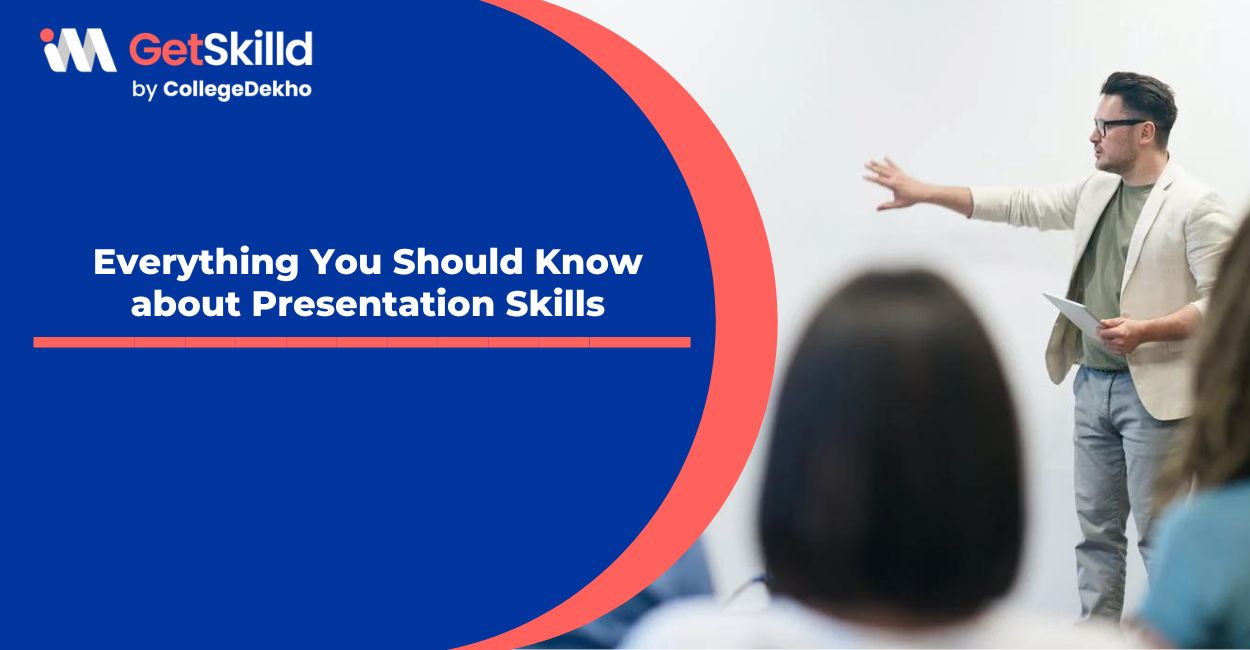
Limited-Time Offer : Access a FREE 10-Day IELTS Study Plan!
Presentation skills include various aspects of communication. Your verbal communication, including intonation, confidence in voice, and convincing words; non-verbal communication, including gestures and body language; the technical and visual aspects of your presentation and many such factors contribute to different types of presentation skills. You can’t ignore any of them.
What if your boss asks you to handle a group of clients to present the product your company has recently launched? Would you dodge what your boss says, considering you don’t have presentation skills? NO! Hence, you should and have to learn the tips to improve your presentation skills, and we will help you get through with our
9 Most Important Presentation Skills
Have clarity on the topic to be presented..
No matter how well of a speaker you are, if you don’t know what you are presenting to people, you lose it! Always do your research properly before your presentation. Think about the best ways you can present a topic assigned to you (for example, a new service of your organisation.) Know the details of the topic you will present, including its origin, its importance, its execution, and so on. This way, you will sound like a human of substance.
Know who you are presenting to.
We often ignore our focus group and keep going on with our ideas of a ‘good presentation’. What’s the point of presenting anything when the attendees can’t understand the context? Therefore, tailor-make the jargon, words, and examples in relation to the people who will attend your interview. It makes your task much easier!
Practice it enough!
Do you know who is the best and the fundamental evaluator you can ever have? YOU! Keep practising and improving your communication skills every day. Presentation is communication, and when you master the art, nothing can stop you from being an amazing presenter. To take your presentation practice even higher, you can use a mirror. Keep noting down your improvements, mistakes and other details. This will boost your interest.
Confidence is crucial!
“This…umm..product will do wonders for you, I think, and you will.. umm love it” Would you be convinced if someone asked you to invest in a product in this way? Not really. This shows a lack of confidence. Hence, you should always ensure that you have confidence in yourself and the topic you are presenting. Confidence is one of the most important presentation skills you should have. It changes the game altogether.
Observe the mood of the attendees.
We all have day-dreamt during a boring lecture. And that happens when we don’t feel connected to the content and the context. So, to ensure that your attendees are not bored or deviated from your presentation, observe their moods and expressions. Signs like yawning, and sitting numb, show that you are not connecting with your target group. Hence make sure to have a wave of interest/intrigue that fascinates them.
Make the best use of technology/tools to present your ppt.
Having a good knowledge of tools like MS PowerPoint, Google Slides, etc., helps you in aligning and presenting the content of your slides in the best possible ways. Not only does it make your presentation aesthetically pleasing, but it also says a lot about your personality- Organized or disorganised.
Keep the content of the slides concise and yet complete.
When you are presenting, your presentation slides should be used just to keep the attendees informed (of what the presentation is about) and interested. Keep the texts of legible font size and NEVER MESS WITH THE [Image:Text:Space] RATIO! Your slides shouldn’t look congested and messy. You can use graphs, infographics, pie charts, etc.
Take care of your intonation and style of conversation.
Often you won’t be praised for being casual or informal while presenting. Hence, you must take care of the intonation of your voice. Always stick to the formal style of communication while presenting. Avoid using fillers and colloquial terms.
Dressing sense matters!
The way you dress up and keep up with your hygiene speaks volumes for your personality. Your clothes should never be jazzy or distracting in a formal setting, especially while presenting. Stick to sober and, most importantly, formal clothes.
These are the eight mantras that will elevate your presentation skills. Always remember, it’s all about connecting with your attendees.

Start Preparing for IELTS: Get Your 10-Day Study Plan Today!
Janice Thompson
Soon after graduating with a Master’s in Literature from Southern Arkansas University, she joined an institute as an English language trainer. She has had innumerous student interactions and has produced a couple of research papers on English language teaching. She soon found that non-native speakers struggled to meet the English language requirements set by foreign universities. It was when she decided to jump ship into IELTS training. From then on, she has been mentoring IELTS aspirants. She joined IELTSMaterial about a year ago, and her contributions have been exceptional. Her essay ideas and vocabulary have taken many students to a band 9.
Explore Business Communication Articles
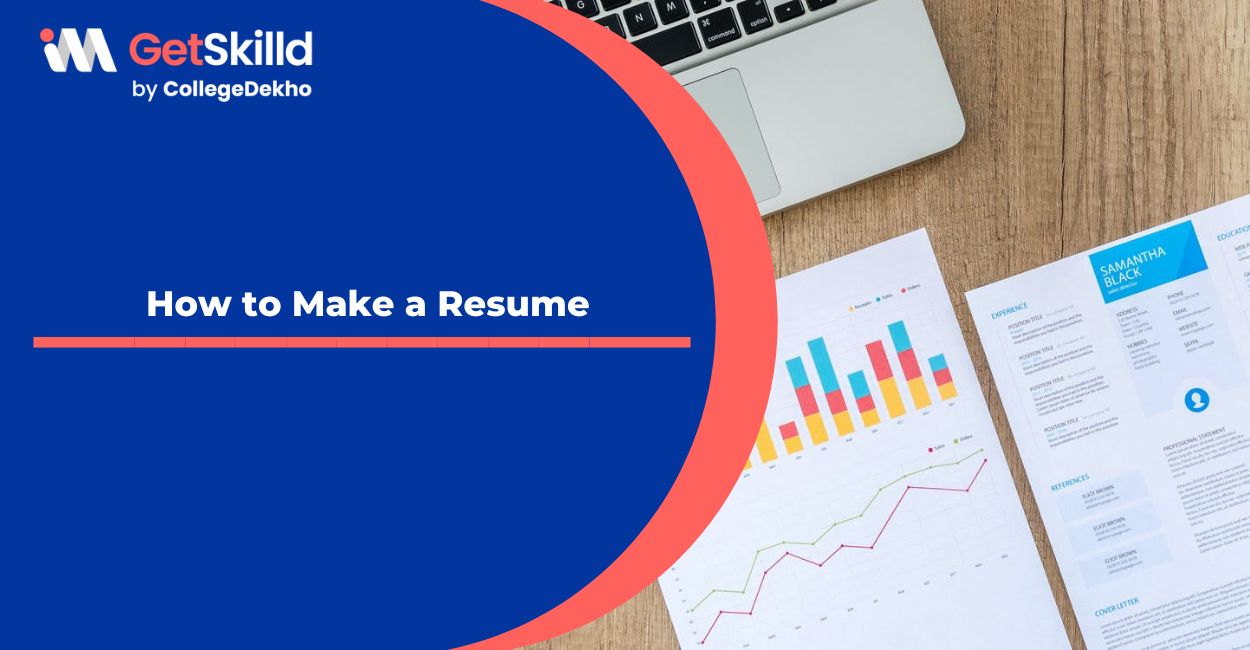
Kasturika Samanta

neeraj Kumar


Post your Comments
Recent articles.

Our Offices
Gurgaon city scape, gurgaon bptp.
Step 1 of 3
Great going .
Get a free session from trainer
Have you taken test before?
Please select any option
Get free eBook to excel in test
Please enter Email ID
Get support from an Band 9 trainer
Please enter phone number
Already Registered?
Select a date
Please select a date
Select a time (IST Time Zone)
Please select a time
Mark Your Calendar: Free Session with Expert on
Which exam are you preparing?
Great Going!
- Pitch Decks & Investor Materials
- B2B Graphic Design
- Startup Consulting
- Trainings & Workshops
- Case studies
- Downloadable resources
13 Tips for a Powerful Business Presentation
- Presentation design

If you are an entrepreneur, a business owner or a marketer you definitely held or will deliver a business presentation. May it be to your employees, your senior managers or to venture capitalists, your presentation must be the support of your ideas.
As scary as it sounds for some of us, preparing a powerful business presentation can differentiate you from the other speakers that your audience has already seen.
From the business presentations that we encountered and designed we recommend following these 13 tips:
When dressing for a presentation, it’s important to wear something you’re comfortable in, and something that makes you feel confident.
Lauren McGoodwin, founder and CEO of Career Contessa
1. Tell the story of your business
Storytelling is a very powerful tool these days. It is so much easier for your audience to follow a story and relate to something real that has happened to you. There is a high chance that they have had the same problems as you or went through similar hard times.
Tell your audience how you got here and what makes you believe in your business.
2. Be enthusiastic
The level of energy in the room depends on you. If you come to deliver the presentation and you are bored or tired, so will your audience be.
Are you passionate about the subject you are presenting? Then use this passion when presenting, people are going to listen to you with more interest.
Get energised before the presentation with some music or with inspirational quotes, do some easy exercises or vocal preparation. This way you will catch their attention from the beginning.
3. Establish your credibility
It’s not a moment to just present your career, but it’s a moment to show that what you say is credible and that you are entitled to be there and give out those informations. You can do this by sharing an experience, or reveal the work that you put in getting to the informations you have now.
This is an important point when you hold a presentation in front of your managers or to venture capitalist. They will immediately know if you have a solid background in the domain.

4. Know your presentation
Even if you created it yourself or you were helped by a designer or agency, you must go through the presentations at least 10 times before going in front of your audience. The presentation is just a visual support of what you are saying, not otherwise.
Public speaking experts advocate for the 10:1 ratio rule where you practice 10x the amount of time you would be presenting (so for a 1-hour workshop, you should practice 10 hours). This is ratio was adapted from the 18th century American philosopher, Wayne Burgraff, who is credited of saying: “It takes one hour of preparation for each minute of presentation time.”
Review your information before the presentation and think of all the questions that you can receive. Make sure you can back up any number or statistic that you might show, as investors will often tear into any kind of projection.
5. Make an analog plan
Visualize how you want your presentation to go, create a map of the presentation. People nowadays are always on a device, laptop, phone or tablet and keep losing the focus of the bigger picture. The best way to start planning your presentation is grabbing a pen and paper and writing down exactly what you want to happen. Tools like notepad, pencil, sticky notes and flash card help you build an outline that you follow after in designing the presentation.
Draw the map, where do you start, where are the stops on the way and where do you want to get the audience. Make sure you have a logical flow of presentation.
Build your arguments around the stopping points, they are the key takeaways of your presentation. This way you will know how long the presentation is going to and how to prepare for it.
6. Speak naturally
This is a business presentation and you should use adequate business language and technical terms, but this should also come to you naturally. If some terms don’t sound right for you should not use them
Think of the goals as hooks for your audience, what is that will attract their interest to follow you through the entire presentation.
The goal is to communicate clearly with your audience.
7. Share your goals for the presentation
Everybody loves achieving goals. Keep your audience attention by setting a few specific goals at the beginning of your presentation that you can achieve during it. The goals are also reminders of your main points.
This will set a sense of effective communication that will after transfer to your way of working.
8. Connect with your audience
There are more ways through which you can connect with your audience. You can do this by talking from a collective point of view, it is a high chance that your audience were in a similar situation.
I know that we all went through this
Another way to keep your audience from any distraction is to ask a startling question, to which you will answer next with your presentation. Or you can engage them with a simple raise of hands if they agree or not with some points of your presentation.
9. Express your ideas visually
A business presentation is longer than most of the presentation, and if all your slides are covered in text, nobody is going to remember it. Impactful images and relevant graphics are easier to follow and don’t distract your audience from what you are saying.
Find creative ways to express your idea with images, videos, art or just a blank slide. With or without presentation skills, this is the best way to get your message across the room.
A lot of speakers use photography to illustrate their ideas. So when everyone uses great photos, how can you make yours stand out and have an impact on your audience? I recommend choosing photos that all use a similar style, subject, or other theme in common.
Jonathon Colman, senior design manager for Intercom
10. Separate your ideas with transition slides
For more impact introduce your next idea with a transition slide. The transition can be either an image or a powerful quotation to evoque the topic. It will also break your presentation in more chapters, making your audience focus on your points one at a time.

11. Personalise your presentation template
How important is the presentation? Do you want to show that you care about the topic? Go to your marketing department or ask a designer to help you tailor a design for your presentation. The right design is like the right pair of shoes.
If you want to go with an existing template look for one that matches the presentation topic. Put some effort into changing the colors to your brand colors.

12. Ask for feedback before the presentation
Working too much or too hard on a presentation can get you so involved that you won’t be able to see the bigger picture. It will make sense to you, but ask for an outsider opinion to see if they can also understand what you present.
Since you already know everything that is in the presentation, let somebody else take a look to check for mistakes or for misplaced words, images, numbers.
13. End your presentation with Next steps
When you finish the presentation the audience is still processing all the information that you just gave. Help them figure out what to do with all of these with the next steps you can make together.
End with a strong call to action and invite them to talk personally about it.

It is a challenge to prepare all of this on your own. Business presentations are complex and need time for preparing. We know it and we can help you prepare it.
Are you ready to take your presentations to the next level?
Our team can help with everything from researching your project, writing the content, designing and building your slides, and even creating handouts.
Get in touch
Top articles
- Infographics
- Personal branding
- Pitch deck design
- PowerPoint tutorial
- Public speaking
- Visual communication
Sign up for our monthly newsletter
Leave a reply cancel reply.
Save my name, email, and website in this browser for the next time I comment.
This site uses Akismet to reduce spam. Learn how your comment data is processed .
IELTS Mentor "IELTS Preparation & Sample Answer"
- Skip to content
- Jump to main navigation and login
Nav view search
- IELTS Sample
GT Reading Test 4 Section 2 - Benefits of business mentor & Planning for Projects
Gt reading mock test 4:, section 2 : questions 15-27, gt readingsamples:, the benefits of having a business mentor &, a planning process for middle-sized projects, the benefits of having a business mentor, questions 15-20, how can a mentor help somebody setting up a business.
- Your first task is to spot what needs to be done. Examine your firm’s current position, perhaps making a formal analysis of its strengths and weaknesses. Then think about how you might improve that position: what opportunities are there for achieving this?
- The next step is to decide precisely what the aim of your plan is. This is best expressed in a simple single sentence, to ensure that it is clear and sharp in your mind. Doing this helps you to avoid wasting effort on irrelevant side issues.
- Next you should work out how to do it. It is tempting just to grasp the first idea that comes to mind, but it is better to consider a wide range of options: this way, you may come up with less obvious but better solutions.
- Once you have explored the options available to you, the selection of which option to use is the next step. If you have the time and resources, you might decide to evaluate all options, carrying out some planning, such as costing, for each. Normally you will not have this luxury.
- You already have a broad idea of what your project will consist of. Now is the time to work out the full details, identifying the most efficient and effective method of carrying it out, including answering the questions of ‘who’, ‘what’ and ‘when’.
- The next stage is to review your plan and decide whether it will work satisfactorily. This evaluation enables you to change to another option that might be more successful, or to accept that no plan is needed.
- Once you have finished your plan and decided that it will work satisfactorily, it is time for implementation. Your plan will cover how this is to be done.
- Once you have achieved a plan, you can close the project. At this point, it is often worth assessing the project to see whether there are any lessons that you can learn.
Questions 21-27
Suggested stages in a planning process.
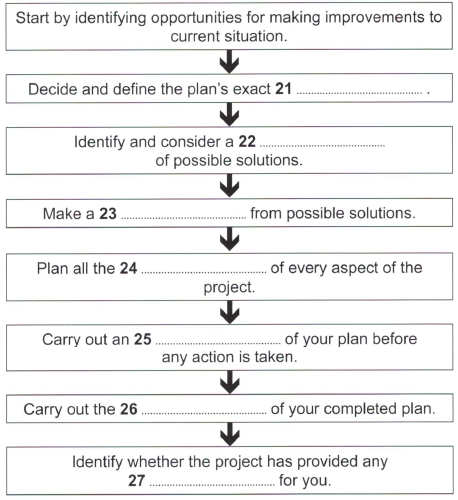
The answer keyword is 'circuit training'. ;-)
15- E, 16- D, 17- A, 18- E, 19- C, 20- B, 21- F.
Can you please tell me why the answer to the question 18 is 'E', and not 'F'?
IELTS Materials
- IELTS Bar Graph
- IELTS Line Graph
- IELTS Table Chart
- IELTS Flow Chart
- IELTS Pie Chart
- IELTS Letter Writing
- IELTS Essay
- Academic Reading
Useful Links
- IELTS Secrets
- Band Score Calculator
- Exam Specific Tips
- Useful Websites
- IELTS Preparation Tips
- Academic Reading Tips
- Academic Writing Tips
- GT Writing Tips
- Listening Tips
- Speaking Tips
- IELTS Grammar Review
- IELTS Vocabulary
- IELTS Cue Cards
- IELTS Life Skills
- Letter Types

- Privacy Policy
- Cookie Policy
- Copyright Notice
- HTML Sitemap
- Call: +44(0)20 7226 1877
- Email: [email protected]
- My basket ({{$root.cartInfo.count}})
Business Presentation Tips

Good presentation skills are within everyone’s reach. Here are some simple tips to help you hone more effective presentation skills.
Effective Business Presentation Tips
Good presentation skills are within everyone’s reach.
For many people, if not most, presenting can be a daunting and unpleasant experience.
It needn’t be so, and here we’ll give you some effective business presentation tips to help you hone more effective presentation skills .
Presentations are an effective way to communicate to large numbers of people at the same time.
Improving business presentation skills is not just about communicating information better.
You also need to be able to create interest and excitement in your subject and trust and enthusiasm in yourself.
Essential Business Presentation Tips
Preparing to present.
Practise with a colleague or friend.
Think about who your audience is and what you want them to get out of a good presentation.
Think about content and style. If you video yourself get someone else to evaluate your performance and highlight your best skills; you will find it very difficult to be objective about those skills yourself.
Prepare, prepare, prepare.
Reconnoitre
Go into the presentation room before the event; practise any moves you may have to make, e.g. getting up from your chair to the podium. Errors in the first 20 seconds can be very disorientating.
Try not to over-rehearse Trust those skills you know you have. Don’t rehearse the whole thing right through too often.
Your time is better spent going over your opening and your finish.
Pick a few choice bits to learn by heart.
Technical Support
Test the equipment before the presentation. Get familiar with it before you start. PowerPoint can often seem as though it’s out to get you , so make sure you have enough technical skills or backup
If you look like you’re in charge , people will take you more seriously.
Visual Presentation Aids
The skill with visual aids is to use them to give a big picture quickly. Graphics, pictures, cartoons bar charts etc; you can then use words to elaborate.
Slides with words on them are of limited value. If you seem to have a lot you may find you are showing your audience your speaker notes!
Make Sure to Read PowerPoint Skills – Top 10 Tips
Developing a Business Presentation Style
Be yourself.
Your most useful business presentation skills are the skills you already have. Use any personal gestures or vocal inflexions to your advantage.
It’s very hard to change the way you express yourself. More powerful presentations are ones where you actually put the energy into the presentation (this is a message you will hear again).
Similarly, do not try to be anyone else or copy another presenter’s style.
Be more expressive rather than less. These days ‘good communicators’ are more and more frequently seen on TV and held up as models.
When you are giving a presentation it is not TV. This is you communicating live . Gestures help people to understand and they convey enthusiasm for your topic.
Dealing with Presentation Nerves
A certain amount of nervousness is vital for a good presentation. You need the extra energy to communicate. What you feel when you stand up in front of people is the urge to either run away or fight.
Feel the fear and do it anyway .
If you endeavour to stifle those feelings you will be inhibited, restricted, artificial and wooden. The added adrenaline will keep your faculties sharp and your presentation skills ready to engage with your audience .
Extra adrenaline, however, can result in shallow upper chest breathing and tension. Taking a slow, deep breath, breathing fully out and then in again, will relax you.
Strangely having something to pick up and put down tends to release your breathing.
Get Something Else to Do
It may seem an odd idea, but our bodies seem to feel better when they have some sort of displacement activity to occupy them. It’s the reason people hold pens and fiddle with things.
A limited amount of this sort of activity will not be too obtrusive and can make you feel a whole lot more secure .
Hold on to Something
When you start your presentation you are at your most insecure. Avoid all the well-meant advice about what you are and are not allowed to do.
Until you feel settled do anything you can find to make yourself feel secure. This includes holding onto a lectern.
Even just standing next to something solid will make you feel less wobbly.
The breathing tip above will help you to slow down your presentation. Go more slowly than you think necessary to avoid gabbling.
Your audience needs time to assimilate and interpret what you are saying. It’s a fact that when adrenaline is flowing your sense of time is distorted and what seems OK to you may look like fast forward to your audience.
Check Out – Presentation Skills – The Power of Eye Contact
Working your Audience
Presentation as conversation.
Make your presentation a conversation with your audience . They may not actually say anything, but make them feel consulted, questioned, challenged, and argued with; then they will stay awake and attentive.
One of your best business presentation tips is the ability to stimulate your audience into wanting to get more of the information you have. Be provocative with your material, don’t just present that information to them.
Engage with the audience in front of you, not the one you have prepared for. Look for reactions to your ideas and respond to their signals.
If the light bulbs are not going on find another way to say it. Monitor their reactions; it’s the only way you’ll know how you’re doing and what you should do next.
If you’re not going to interact you might as well send a recording of your presentation. Be there. It’s why you came.
Show conviction
Give an expressive presentation, an emotive presentation, and an enthusiastic presentation and your audience will respond, which is what you want. At the very bottom line, disagreement is preferable to being ignored.
Use your excitement, pace yourself to give an exciting presentation, and use something you know you feel strongly about to build up to an important point or as a springboard to another idea.
Get some perspective
The odds are that someone in the audience will not like your presentation, or may disagree with you . There will probably be someone else out there for whom you can do no wrong.
As a rule of thumb, the majority of audiences want to like you and what you have to say.
They want you to be good
They didn’t come hoping to be bored or irritated by your presentation.
Tips on Structuring Effective Business Presentations
Use metaphors.
Metaphors and analogies are vital presentation skills to develop . ‘It’s like climbing a greasy pole’, for example, conveys far more than just literal meaning.
It creates images and feelings and enables others to empathise through similar experiences of their own. And remember the light bulbs – if they’re not lighting up try a different metaphor.
Compelling presentations are full of examples. Giving an example always helps your listeners to see more clearly what you mean. It’s quicker and more colourful.
Stick to the point using three or four basic ideas. For any detail that you cannot present in 20 minutes, try another medium such as handouts or brochures.
Your Business Presentation Finale
End as if your presentation has gone well. Do this even if you feel like you’ve presented badly.
First, you’re probably the worst judge of your presentation, and second, if you finish well you’ll certainly fool some of the people into thinking it was all pretty good.
And anyway a good finish to a business presentation will get you some applause – and you deserve it!
Developing as a Business Presenter
Trust yourself and your skills.
If you do not think you are up to a particular presentation either get help (do presentation training courses and rehearsals with a presentation trainer ).
Or if it’s too daunting, get someone else to do it (there’s no shame in recognising your limits).
However, most people have better business presentation skills than they think they do. Recognise what skills you have.
If you doubt your ability to think on your feet, for example, then defer questions till after the presentation. Similarly, do not use a joke as an icebreaker if you are not good at telling them.
Success is the Best Training
Don’t overreach yourself. Several short business presentations that you feel went well will do you far more good than one big one that makes you sick with nerves and leaves you feeling inadequate.
Encourage those around you to tell you the things you did well. Very few of us make progress by being told what was wrong with our presentation. When we’re up in front of an audience we all have very fragile egos.
Follow these essential business presentation tips and your authentic presentation style development will blossom.
Check out New Survey Reveals 70% Say Presentation Skills Are Critical For Career Success
Impact Factory runs
Open Presentation Skills Courses
Tailored Presentation Training
Five-Day Elite Presentation With Impact Workshops
and personalised
One-to-One Presentation Coaching
for anyone who is interested in
Presentation Skills
Related Articles

What Tools and Software to Use to Create the Best Work Presentations
- Presentation
Explore popular tools for different experience levels and budgets.

Mastering a Virtual Stage: How to Give Career Boosting Virtual Presentations
- Remote Working
Stay ahead of the crowd by mastering the art of virtual presentation.

Choosing a Presentation Skills Training Provider
A lot depends on selecting the right presentation skills training course provider.
Discuss your requirements
If you like what you've seen, please call us on +44 (0)20 7226 1877 or click the button below to contact us via our contact form.
Privacy Overview
Tips for giving an effective business presentation
Leave a comment cancel reply.
Your email address will not be published. Required fields are marked *
Save my name, email, and website in this browser for the next time I comment.
- 700k Followers
- 990k Followers
- +91 7065060158

- By Krishnatrya
- May 8, 2023
Top 5 Strategies to Ace the IELTS Exam Tips for Success

The International English Language Testing System (IELTS) is a renowned exam designed for non-native English speakers. It serves as a prerequisite for individuals aspiring to study or work in English-speaking countries. While the test can be challenging, success is attainable with effective strategies. In this blog article, we will explore the top five strategies that will help you pass the IELTS test with confidence.
Comprehend the Test Arrangement and Scoring Rules
Before you begin getting ready for the IELTS (Global English Language Testing Framework) test, understanding its arrangement and scoring criteria is essential. This blog entry will give an outline of the IELTS test design, including the various areas (Tuning in, Perusing, Composing, and Talking) and the kinds of assignments and questions you can anticipate. We will likewise make sense of the IELTS inspectors' scoring models to evaluate your language capability and how you can decipher and utilize your scores to design your review and keep tabs on your development. Moreover, we will give tips and techniques for each part of the test, including how to deal with your time really and stay away from normal errors. By understanding the test configuration and scoring rules, you can more readily plan for the IELTS test and expand your possibilities of accomplishing your ideal score.
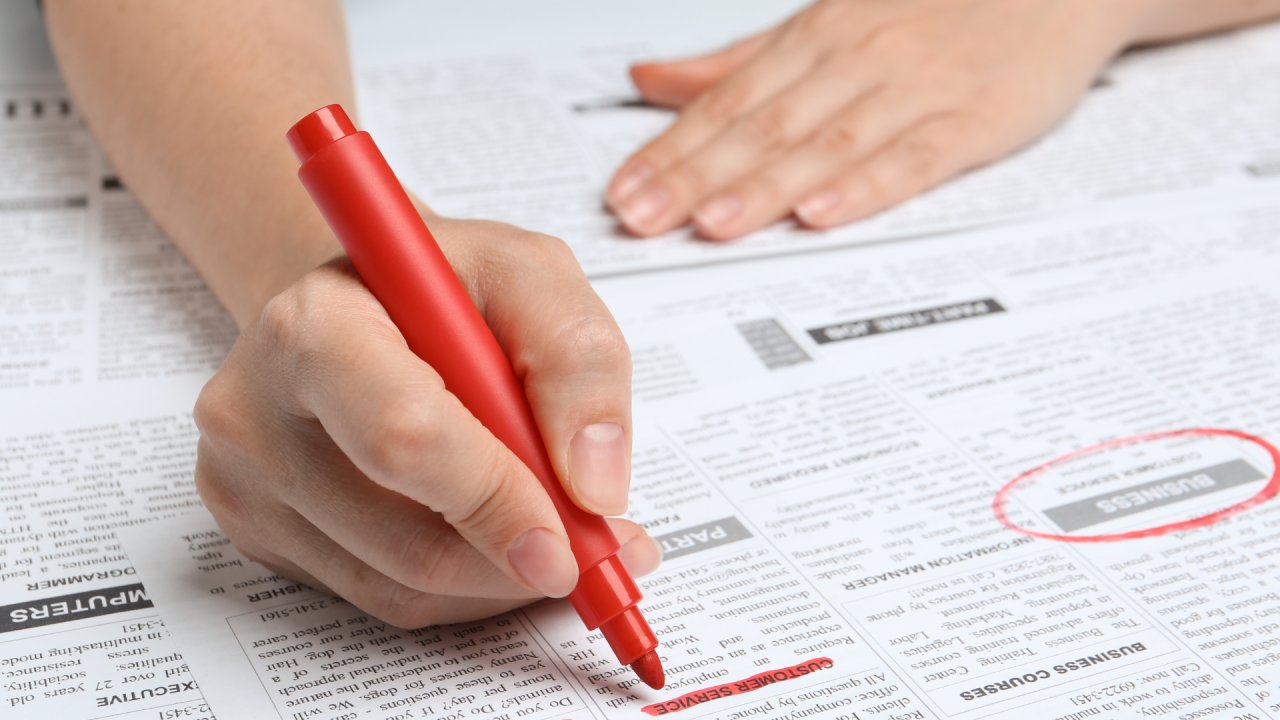
Extend Your Statement Power
For the IELTS test, particularly for the Perusing and Composing segments, it is fundamental to have areas of strength for a. Begin by understanding books, papers, and insightful articles. List new words alongside their definitions, then work on placing them in sentences. Use cheat sheets, tests, and word games to build up your learning. We will talk about the various kinds of jargon you really want to be aware, including scholarly and specific jargon, and give assets and procedures to growing your assertion information. We will likewise investigate how to utilize setting hints and word roots to deduce the significance of new words and remember and hold new jargon really. By building your jargon, you can work on your presentation on the IELTS test and improve your general language capability and relational abilities.
Practice Consistently
Predictable practice is basic to working on your English abilities. Set a review timetable and stick to it. Work on paying attention to English webcasts, watching English motion pictures or Television programs, perusing English articles, and composing expositions. You can likewise find free IELTS practice tests online to reproduce the test climate. We will talk about the advantages of working on, including working on your precision and speed, expanding your certainty, and recognizing regions for development. We will likewise give assets and strategies for rehearsing each part of the IELTS test, including tuning in, perusing, composing, and talking. By making customary practice a piece of your review schedule, you can work on your exhibition on the IELTS test and boost your possibilities of accomplishing your ideal score.
Focus on Time Management
Using time productively is basic for the IELTS test, as each segment makes some severe memories limit. Work on doing planned activities to become accustomed to working under tension. Use techniques, for example, skimming and checking to peruse quicker and save time in the Understanding area. In the Composing area, allot your time shrewdly between arranging, composing, and checking. We will talk about the time limitations of each segment of the IELTS test and give procedures to expanding your time while keeping up with precision. We will likewise investigate the advantages of taking on a steady speed during the test and give methods to overseeing test tension and remaining on track. By further developing your time usage abilities, you can work on your presentation on the IELTS test and foster a significant fundamental ability that will serve you in scholar and expert settings.
Center around Using time effectively
Getting input and direction from an accomplished IELTS mentor or educator can assist you with recognizing your shortcomings and working on your abilities. They can likewise give you significant hints and methodologies to pro the test. Join an IELTS readiness course or track down an internet-based mentor to direct you through the planning system. This blog entry will investigate the advantages of looking for input and direction and give pragmatic tips for tracking down assets and backing to assist you with planning for the test. We will examine the significance of getting criticism on your composition and communicating in abilities and generally language capability. We will likewise investigate the advantages of working with a mentor or language mentor and using the web assets and practice tests. By looking for criticism and direction, you can recognize regions for development, gain trust in your abilities, and work on your exhibition on the IELTS test.
All in all, accomplishing an ideal score on the IELTS test can open up numerous open doors for non-local English speakers. Be that as it may, the test can be testing, and legitimate arrangement is important to succeed. By following the main five methodologies illustrated in this aide, you can foster the abilities and procedures expected to pro the test. Whether it's further developing your use time productively, upgrading your perusing and listening abilities, or working on talking and composing, integrating these systems into your planning will assist you with feeling certain and ready on test day. So begin planning early, remain on track and propelled, and recollect that with commitment and difficult work, you can accomplish your ideal score on the IELTS test.
Similar Post

How to Think in English Like an Expert
This guide provides insights into the mindset and strategies...

The Advantages & Disadvantage of Learning...
This article explores the benefits and drawbacks of using...

Why Busy Professionals Should Invest...
Enhance your career with executive English training. Discover...
Copyright © 2023 ESOL SOLUTION PRIVATE LIMITED. All Rights Reserved
- Staff Portal

IMAGES
VIDEO
COMMENTS
Tips for giving an effective business presentation. Preparation: Get someone else to evaluate your performance and highlight your best skills. For example, go through your presentation in front of a colleague or relative. Think about who your audience is and what you want them to get out of the presentation. Think about content and style.
Answers. Check out Tips for giving an effective business presentation reading answers below with explanations and locations given in the text.. 15. colleague 16. power cut 17. breathing 18. displacement activity 19. conversation 20. reactions 21. examples 22. handouts
This Video Covers the IELTS 11 Test 2 General Training Reading Section 2 - Tips for giving an effective business presentation. It's a complete live practice ...
You will put your audience to sleep right away. Start off enthusiastically so they will listen with curiosity and interest. After your energetic introduction, identify yourself briefly and thank the audience for taking the time to listen to you. Plan your ending, and finish in a memorable way.
This General Training IELTS Reading post deals with a solution package for IELTS Cambridge 11 Reading Test 2 Section 2 that has two texts entitled 'Tips for giving an effective business presentation' and 'How to get a job in journalism'.This is a targeted post for candidates who have big problems finding out and understanding Reading Answers. This post can guide you the best to ...
Tips for giving an effective business presentation. Preparation Get someone else to evaluate your performance and highlight your best skills. For example, go through your presentation in front of a colleague or relative. Think about who your audience is and what you want them to get out of the presentation. Think about content and style.
Here are a few tips for business professionals who want to move from being good speakers to great ones: be concise (the fewer words, the better); never use bullet points (photos and images paired ...
While you don't want to speak too fast, it's a good idea to use a different pace for different parts of your presentation. For example, when you want to communicate a key point, speaking more slowly will help people understand that you think it is important. Equally, it's a good idea to vary the pitch of your voice.
IELTS General Training Reading: Cambridge 11 Test 2 Section 2; Tips for giving an effective business presentation & How to get a job in journalism; with top solutions and best explanations ... Najib spends most of his time developing better ways to solve IELTS Reading, Writing, and Speaking questions and topics with detailed explanations and ...
Tips for giving an effective business presentation. Preparation: Get someone else to evaluate your performance and highlight your best skills. For example, go through your presentation in front of a Q1 colleague or relative. Think about who your audience is and what you want them to get out of the presentation. Think about content and style. Go ...
Planning your presentation. Visual tools such as outlines or concept maps can help you see the overall structure of a topic and how the main points are linked. Your outline/concert map should include: A purpose statement. An introduction. Each of the main points you intend to address.
2 Be enthusiastic. Believe me, vibes matter. No one wants to hear you drone on about a subject you don't care for. If you're tired and bored of your own presentation, your audience is probably feeling the same way. Anyone listening to you should know how passionate you are about the subject.
Tips for giving an effective business presentation. Preparation: Get someone else to evaluate your performance and highlight your best skills. For example, go through your presentation in front of a colleague or relative. Think about who your audience is and what you want them to get out of the presentation. Think about content and style.
Tips for giving an effective business presentation. Preparation Get someone else to evaluate your performance and highlight your best skills. For example, go through your presentation in front of a colleague or relative (Question no: 15, Answer: Colleague).Think about who your audience is and what you want them to get out of the presentation.
Answers. Check out How to Prepare for a Presentation reading answers below with explanations and locations given in the text.. 21. compliment 22. sentence 23. story 24. props 25. time 26. game 27. confidence
Tips for giving an effective business presentation. Preparation: Get someone else to evaluate your performance and highlight your best skills. For example, go through your presentation in front of a colleague or relative. Think about who your audience is and what you want them to get out of the presentation. Think about content and style.
Presentation skills include various aspects of communication. Your verbal communication, including intonation, confidence in voice, and convincing words; non-verbal communication, including gestures and body language; the technical and visual aspects of your presentation and many such factors contribute to different types of presentation skills ...
Writing Preparation Tips. Preparation Tips for Academic IELTS Writing: It is important that you finish both the IELTS Academic writing task 1 and 2 within the advised time limits. As Task Two carries more weight than task 1 in your final band score, you should concentrate on practising task 2 more. Illegible handwriting will reduce your final ...
The goal is to communicate clearly with your audience. 7. Share your goals for the presentation. Everybody loves achieving goals. Keep your audience attention by setting a few specific goals at the beginning of your presentation that you can achieve during it. The goals are also reminders of your main points.
A mentor can provide you with a number of benefits, such as: • guidance on developing and improving your business. • help with decisions - particularly difficult ones. • ideas for new products or services, or for working practices that will improve your efficiency. • tips for your business that are gained from practical experience.
Business Presentation Tips. If you like what you've seen, please call us on +44 (0)20 7226 1877 or click the button below to contact us via our contact form. Create interest, excitement, trust and enthusiasm. Here are some simple business presentation tips to make your presentations more effective!
BOOK CAMBRIDGE IELTS 11 ANSWER KEY GENERAL TRAINING READING TEST 2 (TWO) PASSAGE 2 ANSWERS 15 colleague 16 power cut 17 breathing 18 ... Tips for giving an effective business presentation. By Princi Sharma / September 18, 2021 ... Tips for giving an effective business presentation. By Princi Sharma / September 18, 2021
In this blog article, we will explore the top five strategies that will help you pass the IELTS test with confidence. Test Section. Test Format. Time Limit. Scoring Criteria. Listening. 4 sections, 40 questions. 30 minutes. Scores are based on the number of correct answers.